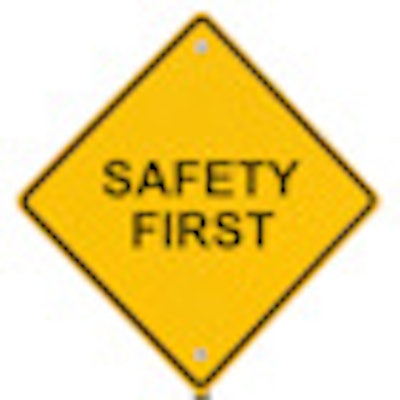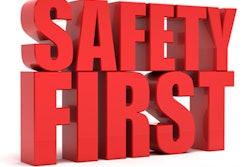
The European Federation of Organisations for Medical Physics (EFOMP) recommends imaging centers take a "two-level approach" to improve MRI safety and eliminate or minimize accidents. It has found a "wide variation" in safety procedures in Europe, ranging from restrictive national standards to reports of no MRI safety regulations at all.
In a recent policy statement published online in the European Journal of Medical Physics (March 2013, Vol. 29:2, pp. 122-125), EFOMP suggests creating the positions of MRI safety officer to monitor MRI safety on a daily basis and MRI safety expert with a high degree of scientific and technical expertise. The group has made its recommendations in part due to a new survey.
The greatest risk within the MRI department is from the intense strength with which the magnet can pull ferromagnetic objects toward the scanner with great velocity, according to the organization. The resulting flying objects have caused patient and staff fatalities in the past, so screening anyone who enters the MRI room should be mandatory.
MRI personnel also should be aware when patients with implanted ferromagnetic materials, such as a pacemaker or other medical-related leads, are scheduled for an exam. The strong radiofrequency of the magnetic field can heat the ferromagnetic material, causing burns for the patient.
"In some situations, for example when coil leads are placed on the skin or conducting loops are formed by the patient's arms and hands in contact with their trunk, this can be excessive and lead to local burning of tissue," the report stated. "Local heating may also occur around implanted conducting structures such as guide wires and some prostheses."
Even the simple movement of a patient through the static magnetic field gradient can lead to sensory effects, such as vertigo and nausea. The gradient system generates low-frequency pulses, which, in turn, can induce currents within body tissue that may result in peripheral nerve stimulation (PNS). While PNS has no known long-term health consequences, a patient can become uncomfortable and even feel pain at high levels of exposure.
Safety management
To help develop, manage, and enforce safety regulations in the MRI environment, the EFOMP recommends facilities have a trained MRI safety officer to assess and manage dangers caused by MRI equipment. In addition, the safety officer would be responsible for implementing and monitoring measures to protect against accidents and ensure those safety measures are followed and maintained.
The MRI safety officer should be trained about good safety measures and have the authority to enforce guidelines within the MRI environment.
The second part of the safety plan includes an MRI safety expert, the report stated, who has "the skill, knowledge, and competence to provide high-level advice on the engineering, scientific, and administrative aspects of the safe clinical use of MR devices."
Specifically, this person would handle the development and constant evaluation of safety measures within the MRI environment, create a set of rules and procedures to ensure the safe use of MRI equipment, and provide guidance on nonroutine MRI procedures for individual patients and specific patient groups, especially if a person has an implanted medical device or tattoo.
Proper education
According to the EFOMP, the qualifications for MRI safety expert should be in line with recommendations from organizations, such as the U.K.'s Medicines and Healthcare Products Regulatory Agency (MHRA), which require a higher level of knowledge, skill, and competence than the MRI safety officer.
"However, currently within Europe there is no consensus regarding the skills, knowledge, and competence required of the person responsible for MR safety," the authors noted. "For example, in Germany there are no requirements for this person to be from a specific profession or to have any accredited training."
Thus, the EFOMP recommends that potential candidates have "relevant scientific qualifications," including MR physics, which should be at least at European Qualifications Framework Level 7, with one or more additional years of hands-on experience.
Accreditation review
EFOMP also recommends that an MRI safety expert be accredited by a "competent authority" and that the expert's performance be reviewed every five years and receive additional training so that he or she may maintain their accreditation.
The report author also suggest that the person appointed as the MRI safety expert preferably should be a medical physicist, since people with that training have a background in medical applications of high-risk radiation.
"There is a growing role of MRI outside conventional imaging departments such as in MRI-specific neurology, surgery, and cardiology departments where medical physics expertise in ionizing radiation may not be needed," the authors wrote.



















